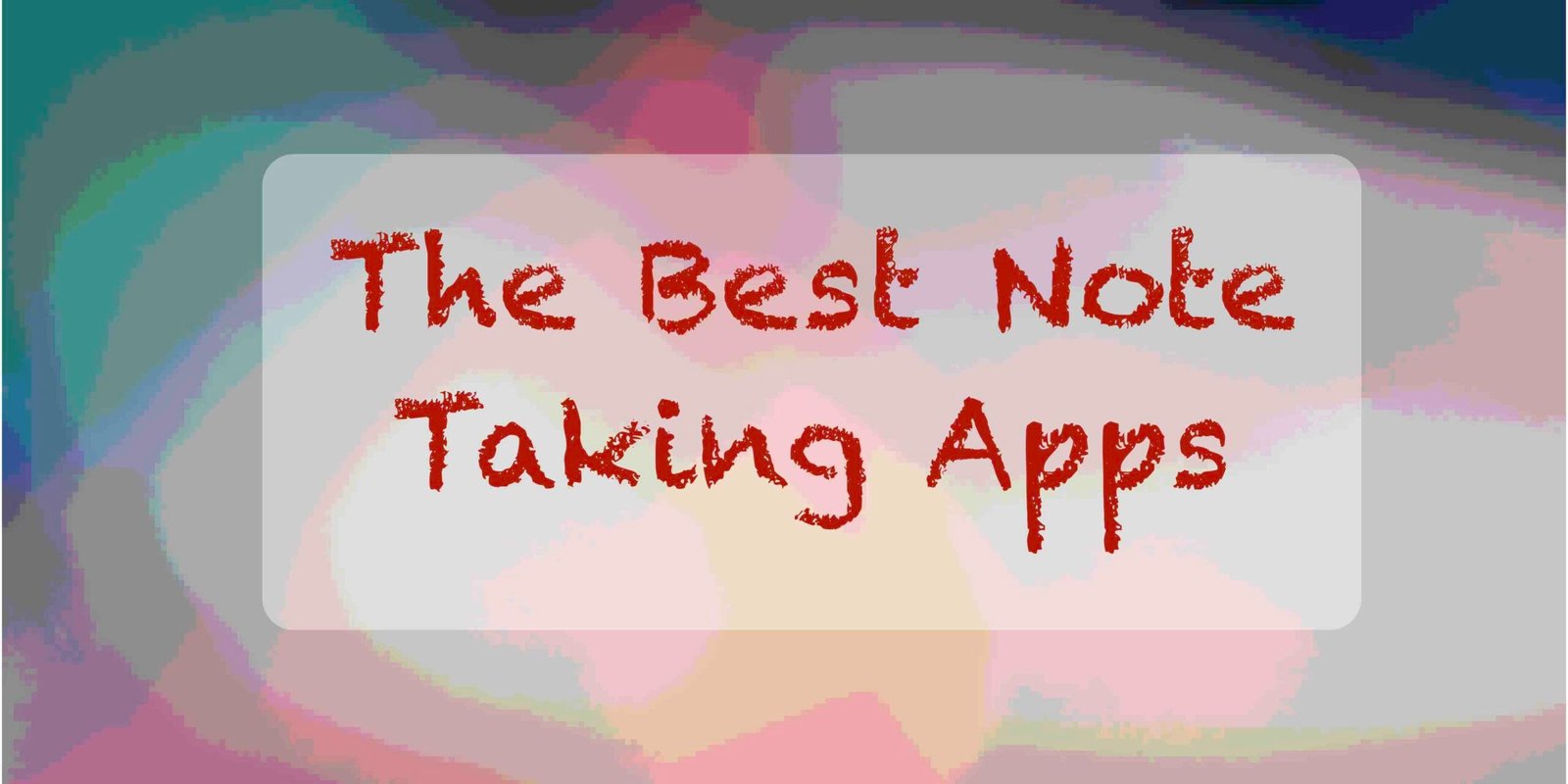In our daily life, we are constantly bombarded with massive amounts of information such as meeting notes and social media updates to photos, videos, and documents. Managing this flood of data requires an efficient way to store, organize, and retrieve information when needed.
Note-taking is a universal yet highly personal practice. Everyone has their own method, whether it’s as simple as jotting down a grocery list or phone number or as detailed as creating comprehensive book summaries, structured meeting minutes, or creative journals.
With the constant flow of digital information, note-taking apps have become essential tools, helping users capture, categorize, and retain data efficiently. Some prefer speed and simplicity, while others look for feature-rich solutions with multimedia, tags, and advanced organization.
For some, notes are just plain text with basic headings and bullet points; for others, they function as dynamic digital scrapbooks, filled with doodles, images, and embedded media. Whatever your style, there’s a note-taking app that can accommodate your needs—you just have to find the one that fits your unique workflow.
Why You Need a Note-Taking App
Today, effective note-taking has become an indispensable skill. It’s a highly personal process, akin to handwriting, with everyone adopting their unique style. For some, it’s as simple as jotting down grocery lists or phone numbers. For others, it involves creating detailed book summaries, project outlines, or meeting notes. Regardless of whether you value speed and simplicity or prefer feature-rich tools, there’s a note-taking app tailored to your needs.
With an overwhelming flow of digital information, note-taking apps provide a reliable way to capture, categorize, and manage the constant influx of data. From plain text organization to crafting visually rich notes with images and embedded media, these apps cater to a wide range of preferences and workflows.
Tips for Choosing the Right Note-Taking App
Selecting the perfect note-taking app hinges on your individual requirements, such as desired features, accessibility, and integration with other tools. Minimalists often favor apps that prioritize simplicity and efficiency, while others may opt for more robust options featuring cloud synchronization, voice notes, and multimedia capabilities. The best app is one that aligns seamlessly with your style and enhances your productivity.
Read: The Best RSS Reader Apps for RSS Feeds
Best Note-Taking apps
Microsoft OneNote
Microsoft OneNote is a versatile and feature-packed note-taking app designed to meet the needs of students, professionals, and creatives alike. With its user-friendly interface, seamless integration with the Microsoft ecosystem, and robust functionality, OneNote is a powerful and reliable note-taking solution that excels in versatility, organization, and collaboration. Its integration with the Microsoft ecosystem makes it a top choice for productivity enthusiasts. Whether you’re managing personal projects, professional tasks, or academic notes, OneNote is designed to simplify your workflow.
Ultimately, the best app for note-taking will depend on the individual’s requirements in terms of features, accessibility, and compatibility with other tools and platforms. But if you are looking for the best recommendation in 2024, the Reflect Notes app is worth giving a try! I hope my recommendation helps you to find the best note-taking app that offers top features as it is best for executives, managers, developers, and knowledge workers.
| Pros: – Free and Accessible – Flexible Note-Taking Options – Can be accessed and edited offline, syncing changes when reconnected. | Cons: – Steep Learning Curve – Relies on OneDrive for storage, which has limited free capacity unless upgraded. – Occasionally experiences syncing delays or conflicts |
How much does it cost?
Available for free download and use, with optional access to premium features through a Microsoft Office 2019 or Microsoft 365 subscription.
Obsidian
[Visit Site]
Obsidian excels as one of the most adaptable apps available. Since everyone organizes their thoughts differently, an effective note-taking tool must conform to unique workflows. Unlike cloud-based alternatives, Obsidian emphasizes local storage, data privacy, and bi-directional linking, making it an ideal choice for researchers, writers, and professionals seeking to develop a well-structured and interconnected personal knowledge system.
| Pros: – Supports themes, plugins, and shortcuts for tailored workflows. – No internet connection required. – Free to Use. | Cons: – Steep learning curve. – No Built-in Cloud Sync for free version. |
How much does it cost?
It comes with different plans.
Personal Use: Free (Forever)
Commercial Use: $50 USD per user, per year.
UpNote
UpNote is a sleek and intuitive markdown-based note-taking app renowned for its clean interface and distraction-free writing experience. Offering cross-platform compatibility, offline access, and robust organizational tools, it serves as a compelling alternative to more feature-heavy options like Evernote and Notion. With enhanced privacy controls and a lifetime purchase option, UpNote is an ideal choice for users seeking a seamless blend of simplicity and functionality.
| Pros: – Offline Mode & Cross-Device Syncing – Privacy-Focused & Secure – Markdown & Rich Text Formatting | Cons: – Not open source – Free Version is Limited – Limited Integrations |
How much does it cost?
UpNote is free to use and syncs seamlessly across all your devices. The free version includes basic features and supports up to 50 notes. UpNote Premium is available on iOS, Android, and Mac with two subscription options:
– $1.99 per month
– $39.99 for a lifetime purchase
Read: Best Productivity Apps for Self-Directed Learners
Notion
Notion is a dynamic and feature-rich note-taking and productivity app that seamlessly integrates note organization, project management, and collaboration into a single, adaptable platform. Renowned for its customizable work-spaces, database capabilities, and multimedia support, Notion empowers individuals, teams, and businesses to streamline information management, track tasks, and build structured knowledge bases. Whether you’re looking for a basic note-taking solution or a comprehensive project management system, Notion can be tailored to fit your workflow.
| Pros: – Highly Customizable – Rich Media Support – Cross-Device Syncing – Free plan includes most essential features for individuals. | Cons: – Steep Learning Curve – Offline Mode is Limited – Can Feel Slow with Large Databases |
How much does it cost?
Plans & Pricing:
• Free: $0
• Plus: $10 per seat/month
• Business: $15 per seat/month
• Enterprise: Custom pricing (Contact for details)
Google Keep
Google Keep is a lightweight, cloud-based note-taking app built for quick and easy note capture. Seamlessly integrated with the Google ecosystem, it enables users to create text notes, voice recordings, checklists, and image-based reminders while automatically syncing across devices. With its intuitive interface and real-time synchronization, Google Keep is perfect for users who need a simple, efficient way to jot down ideas, manage to-do lists, and set reminders on the go.
| Pros: – Free and Easy to Use – Sync Across Devices – Able to share notes and edit them with others in real-time. | Cons: – Limited Formatting Options – Lacks advanced features like bi-directional linking, table support, or PDF annotation. – Best for short notes rather than detailed documents. |
How much does it cost?
Free to use.



